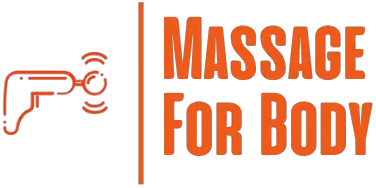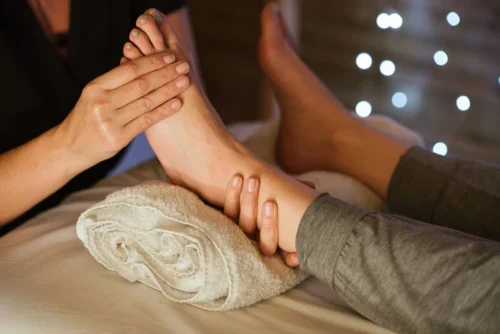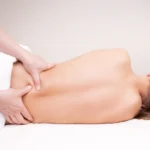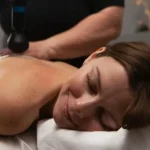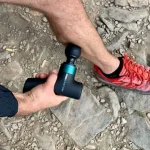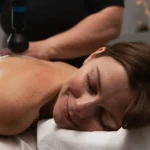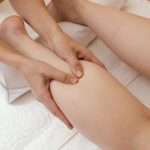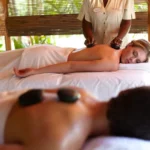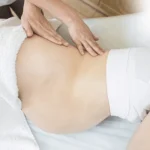Neuropathy can feel like a constant buzz beneath your skin—burning, tingling, or aching sensations that just won’t quit. It often strikes the feet and hands first, disrupting sleep, movement, and peace of mind. If you’re looking for natural ways to feel better, you might be wondering: what type of massage is best for neuropathy?
In this comprehensive guide, you’ll learn:
And when to avoid massage entirely
- How massage helps neuropathy
- The best massage styles for nerve pain
- Safe home massage tips
- Tools to boost results
- And when to avoid massage entirely
Table of Contents
🧠What is Neuropathy?

Neuropathy, or peripheral neuropathy, is a condition where the nerves outside the brain and spinal cord are damaged. These peripheral nerves help with sensory perception, muscle control, and automatic functions like blood circulation and digestion.
When these nerves are damaged, the result can be numbness, tingling, burning, sharp pain, or even muscle weakness. The hands and feet are usually affected first.
🔍 Common causes include:
- Diabetes (diabetic neuropathy)
- Chemotherapy or medications
- Alcoholism
- Autoimmune conditions
- Infections like shingles or HIV
- B-vitamin deficiency
- Physical injury or nerve compression
Some neuropathies can improve with early intervention, while others are chronic and require long-term management. That’s where massage for neuropathy can play a role.
Can Massage Help Neuropathy? 💆♀️
Can massage help neuropathy? Yes—it can offer natural, drug-free relief when done properly. While massage won’t cure the condition, it can greatly reduce symptoms like tingling, pain, tightness, and anxiety.
Massage helps in several key ways:
- Stimulates circulation: Enhancing blood flow delivers nutrients and oxygen to damaged nerves.
- Reduces inflammation: Massage lowers cortisol and increases anti-inflammatory compounds.
- Eases muscle tension: Tight muscles can pinch or irritate nerves—massage helps release that tension.
- Boosts feel-good hormones: Serotonin, dopamine, and endorphins reduce pain perception and improve mood.
- Encourages nerve signaling: Even gentle touch stimulates nerve endings, which supports recovery.
If you’re dealing with tingling, numbness, or pain and have been wondering, “do massages help nerve pain?”—the answer is a confident yes.
How Massage Helps 👐
Massage for neuropathy targets both the symptoms and the underlying contributors like stress, poor circulation, and muscle stiffness.
🔄 Boosts Blood Flow
Better circulation means more oxygen and nutrients reach your nerves, and waste products are flushed away faster—reducing inflammation and pain.
😌 Relaxes Tight Muscles
Neuropathy often creates muscle tension and guarding. Massage loosens tight tissues and helps nerves glide more freely.
🌿 Activates Parasympathetic Response
The nervous system’s “rest and digest” state is key to healing. Massage moves you out of fight-or-flight and into this restorative mode.
⚡ Nerve Stimulation
Even if you have numbness, gentle pressure wakes up nerve receptors and may help retrain them—supporting neuroplasticity.
💧 Supports Lymphatic Drainage
Techniques like manual lymphatic drainage help reduce swelling, which can relieve pressure on nerves.
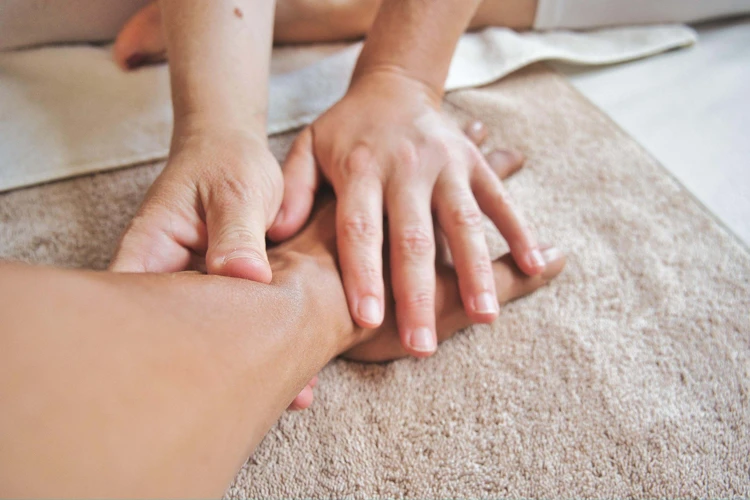
What Are the Benefits of Massage for Neuropathy? 🌟
Massage therapy provides a holistic boost for people with neuropathy—not just physically, but emotionally and neurologically.
🦶 Physical benefits:
- Reduced nerve pain and tingling
- Improved blood and lymph flow
- Decreased inflammation
- Better flexibility and range of motion
- Enhanced balance in hands and feet
😊 Emotional benefits:
- Reduced anxiety and depression
- Better sleep
- Increased sense of well-being
- Reconnection with your body
🔬 Cellular support:
Massage promotes nitric oxide release, aiding vascular repair. It may also help lower inflammatory cytokines, improving your body’s healing response.
What Type of Massage is Best for Neuropathy? 🛏️
When exploring what type of massage is best for neuropathy, it’s important to understand that no single technique is perfect for everyone. Your ideal massage depends on where your symptoms occur, how sensitive your skin or nerves are, and your comfort level.
Below are the most effective massage styles for neuropathy massage treatment:
Swedish Massage
A foundational, gentle massage style using long strokes, kneading, and light to moderate pressure. Ideal for calming the nervous system, improving circulation, and managing stress.
✅ Best for: Beginners, people with heightened nerve sensitivity, and full-body relaxation.
Deep Tissue Massage
Targets deeper layers of muscle tissue. This may help if you have nerve compression from muscular tension—but it should be used cautiously, as too much pressure can worsen symptoms.
✅ Best for: Muscular pain, posture correction, and chronic tightness (with therapist guidance).
Reflexology
Focuses on specific pressure points in the feet that correspond to various organs and nerves. Particularly helpful for massage for numbness in feet.
✅ Best for: Foot neuropathy, diabetes-related nerve pain, and those who prefer non-invasive approaches.
Shiatsu & Acupressure
These Eastern techniques stimulate energy pathways using finger pressure. They are grounding and supportive, especially for people with fatigue, insomnia, or emotional stress related to neuropathy.
✅ Best for: Holistic support and restoring energy flow.
Manual Lymphatic Drainage (MLD)
A feather-light, slow massage technique used to stimulate lymph flow and reduce swelling. Helpful if your neuropathy is accompanied by fluid retention.
✅ Best for: Inflammatory or autoimmune neuropathies, swollen limbs, post-chemotherapy care.
💡 Pro Tip: Always communicate with your massage therapist. Let them know where your symptoms are, how intense they feel, and whether you’re feeling hypersensitive to touch.
🗓️ Frequency: Weekly massage sessions yield the best long-term results, but even short daily self-massage can offer comfort.
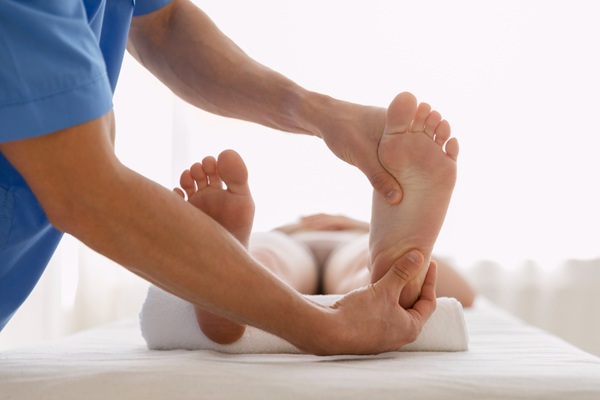
How to Massage Feet with Neuropathy 👣
Your feet are often ground zero for neuropathy symptoms—and gentle foot massage can dramatically improve comfort, sleep, and mobility.
Step-by-step guide:
- Warm-up with a heated towel or foot soak to relax tissue
- Apply unscented lotion or hypoallergenic massage oil
- Use long strokes along the top of the foot with your palms
- Use small circular thumb movements in the arches and heel
- Massage between and around each toe
- Finish with gentle ankle rotations and pressure across the ball of the foot
💤 Bonus tip: Use a warm compress after massage to extend relief.
Massage Tools & Techniques for Neuropathy Relief 🧰
You don’t need to visit a spa to experience benefits. These home tools are perfect for daily use:
- Foot rollers: Great for plantar pressure stimulation
- Electric foot massagers: Look for models with heat and adjustable intensity
- Massage balls: Target hard-to-reach areas of the calves or arches
- Massage guns: Use on thighs or calves, not directly on numb zones
- Cold/heat compresses: Alternate to reduce inflammation
Try different tools and see what feels best—some days you might need soothing warmth, other days gentle compression.
The Role of Foot Massagers in Neuropathy Relief 🦶🔌
Foot massagers can be an excellent daily solution to maintain comfort and reduce symptoms of nerve pain. Their consistent stimulation improves blood flow, soothes tight muscles, and helps calm overactive nerves.
Popular types:
- Shiatsu foot massagers: Mimic kneading fingers
- Compression foot massagers: Use airbags to apply and release gentle pressure
- Heated models: Add warmth to boost circulation and comfort
✅ Foot massagers are especially helpful before bedtime when neuropathy symptoms often flare up.
👉 Want to upgrade your foot care routine? Don’t miss our top picks in the Best Foot Massager for Neuropathy guide.
FAQs About Neuropathy Massage❓
Do massages help nerve pain?
Yes. Massage boosts circulation, reduces inflammation, and stimulates the nervous system to relieve symptoms.
Can massage reduce numbness in feet?
While massage won’t reverse nerve damage, it can improve blood flow and help restore some sensation over time.
Is massage safe for diabetic neuropathy?
Yes, as long as there are no open wounds or skin issues. Always consult your doctor and work with a trained therapist.
How often should I get a massage?
Once or twice per week is ideal. Gentle daily self-massage can also help maintain progress.
Should I tell my therapist I have neuropathy?
Absolutely. They can tailor pressure, technique, and focus areas accordingly.
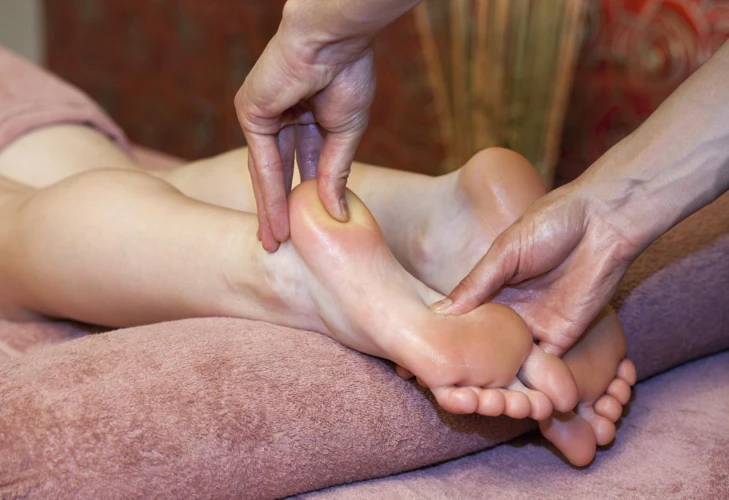
Contraindications & Safety Tips ⚠️
Massage is safe for most—but a few precautions apply:
- Don’t massage areas with ulcers, wounds, or infections
- Avoid deep pressure over numb areas
- Skip massage if you have blood clots or uncontrolled blood pressure
- If you’re unsure, get your doctor’s approval before starting regular sessions
Always start slow, especially if you’re new to massage or have hypersensitive skin.
Conclusion 🌈
Massage offers more than temporary relief—it offers support, connection, and healing. Whether you explore Swedish massage, reflexology, or just a warm foot massager before bed, your journey to better nerve health starts with small, consistent steps.
When used alongside professional care, physical therapy, or medications, neuropathy massage treatment can reduce symptoms, improve your daily function, and help you feel more at home in your body.
🌿 Ready to explore more?
📚 References
- Vieira, et al. (2019). The effect of massage therapy on peripheral neuropathy: A systematic review and meta-analysis. Physiotherapy Theory and Practice.
- Kumar, et al. (2017). Massage Therapy for Neuropathy: A Systematic Review and Meta-Analysis. Indian Journal of Neurotrauma.
- Mayo Clinic – Peripheral Neuropathy
- Cleveland Clinic – Peripheral Neuropathy
⚠️ Disclaimer:
This article is for informational purposes only and does not constitute medical advice. Always consult with a licensed healthcare provider or certified massage therapist before beginning any new treatment, especially if you have pre-existing health conditions or concerns.
